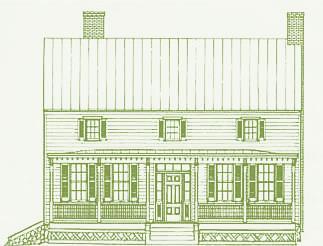

Cherry Hill Newsletter Mid-Spring 2024
Art in the Farmhouse
In honor of World Art Day, celebrated in Falls Church on Saturday, April 13, 2024, the Friends of Cherry Hill joined other non-profit organizations throughout the City in highlighting art in various ways, including “Art in the Park” (delayed due to weather), dance at the Community Center, children’s activities at the library, open art studios, and an end-of-the-day reception, a Finnisage, at the Falls Church Arts Gallery.
The Friends of Cherry Hill developed and printed a brochure showcasing some of the various pieces of 19th century art in the farmhouse. We also arranged for a lecture on the evolution of music in the area. (See below.)
Art
The brochure serves as a guide for docents to provide finer detail about individual art pieces as they provide house tours. The brochure covers silhouettes in the parents’ bedroom, daguerreotypes and a genre painting in the parlor, reverse painting on glass in the dining and keeping rooms, Currier and other prints in various rooms, and portraits throughout the house. The brochure provides background on several portraits. Portraiture has been an important art form for centuries, although styles have changed over the years. The portraits in Cherry Hill are from the mid-1800s and reflect an expanding economy and the desire of “ordinary” people to preserve the images of their loved ones. It seems that the cost of the painting could vary based on the expertise of the artist.
Two examples of typical portraits of the period are found in the parlor. There is an oil and board portrait of Mary Miller, age six, and a large portrait of an unknown gentleman by artist A.J. Riley of London, England. Neither subject lived at Cherry Hill. The painting of Mary Miller was donated to Cherry Hill Farmhouse when it first opened in the 1970s. It was painted between 1860 and 1870, as was its duplicate on the second floor. (See page 7 for images from the brochure.)
Music
The Friends also sponsored a delightful afternoon presentation by Ken Avis, music historian, radio host, guitarist, and singer with the world-jazz band Veronneau. He explained and provided audio-visual examples showing the evolution of popular music in this area from the mid-19th century to the mid-20th century. He discussed how ethnic, slave, and religious musical traditions were integrated and affected by the technological and demographic changes of the times. These influences led to the emergence of a breadth of contemporary popular and jazz music, development of a local music industry, and the careers of many well-known musicians.
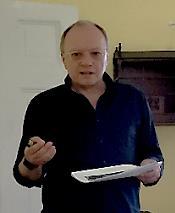
Presidents’ Letter
Although the Cherry Hill farmhouse has not been open for public tours since the end of October, the last few months have been busy. Thanks to coordinator Holly Irwin, many of us have participated in field trips to historic sites in the region. We have highlighted some of those sites in this newsletter. We are now open for our Saturday morning house tours and twice monthly barn activities. We opened the 2024 season with a traditional ice cream social on April 6. Volunteers and lots of children took part in the ice cream churning. (See page 5.) Thanks to Rosemary Ziskind's coordination and the help of volunteers, the Friends held its first tea on February 11. (Additional photographs below.)
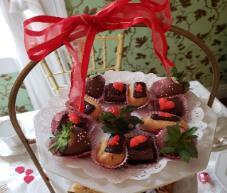
Cherry Hill also participated in Falls Church’s celebration of World Art Day on April 13. The Friends compiled a guide to important 19th century art in the farmhouse. (See page 8) We were also fortunate to have engaged Ken Avis, who provided a fascinating presentation on the development of popular music in this region beginning in the mid-19th century.
The Friends welcomed Ellen Pirog, who has been a steadfast volunteer at the barn, to the Board this winter. We are so glad to have her. We also had a successful membership drive headed by Katharine Stewart. Our interim treasurer, Ruth Rodgers, reported that the drive resulted in several generous donations. With the technical expertise of our student intern, Molly Moore, and the help of Rosemary Ziskind, the Friends are working on compiling a searchable online database of our newsletters. We have also taken steps to reinvigorate our website. Recent board member Kate Volandt has agreed to manage it for us. Please check it out at Cherryhillfallschurch.org. Remember it is a work in progress. However, we welcome comments.
The four Farmhouse-period lanterns we purchased have been installed outdoors by the City. In our recent conversations with the staff of the City’s Recreation and Parks Department, we are pursuing a plan to ensure proper cleaning and updating of the farmhouse. Diane Moore developed a guideline for maintenance workers. Several improvements, like re-enforcing the house’s foundation, are included in upcoming City budgets. The Friends have also arranged payment for painting the farmhouse front porch and steps this spring.
Co-presidents Maureen Budetti & Diane Morse & Child Loss
Upcoming Events & Programs at the Farmhouse
Women's History Walk
Saturday, May 11th
Falls Church
Vietnamese Heritage Day
Sunday, June 16th
Farm to Farmhouse: Pickling Cucumbers
Saturday, July 6th
Farm to Farmhouse: Dried Cherries
Saturday, August 3rd

First Farmhouse Tea of the Year
February 11, 2024


Field Trips to Local Historic Sites
Holly Irwin, Cherry Hill Farmhouse coordinator, recently scheduled a number of field trips to sites of interest in Virginia, the District of Columbia, and Maryland. Friends members and several Cherry Hill volunteers found the excursions informative and relevant to understanding better what was happening in the surrounding area during the period we highlight at Cherry Hill (mid-to-late 1800s). We visited the following sites: (For more information about these locations, see the page indicated below.)
Abner Cloud House, January 13 (page 3)
Clara Barton National Historic Site, January 24 (page 4)
Prince William County Sites including Haislip-Hall Farmhouse and the African American Schoolhouse, February 10 (page 7)
President Lincoln’s Cottage, March 6 (page 6)
Surratt House, March 27 (page 5)
Abner Cloud House in DC
This stone house was built in 1801 and is thought to be the oldest house along the Chesapeake and Ohio Canal (the C&O). Abner Cloud married Susannah Smallwood in 1799. She went on to own the property on which Cherry Hill is now located from 1803-1833 The Cloud house fell into disrepair and the Colonial Dames, Chapter III took on its restoration, which was completed in 1978, in conjunction with the National Park Service.
Ellen Pirog, Betsy Davidson, and Maureen Budetti thoroughly enjoyed the house and were treated royally by the Colonial Dames. They explained the varied uses of the location and provided a tour of the interior. This included the lower floor which is believed to have been the quarters for the enslaved and the cooking area, the parlor with its lovely Federal Period furnishings, and the girls’ and parents’ bedroom areas. They also served us coffee with French pastries and a delicious pound cake made by one of the Dames using Martha Washington’s recipe. (See recipe on page 5.)
Members of the Dames visited Cherry Hill in 2023. They thought our house was gorgeous and were delighted with the tour and information that Diane Morse provided. The Dames’ extremely well-informed historian, Catherine Ball, or one of the other Dames, may return to Cherry Hill to provide us with an overview of the connection between the two houses.
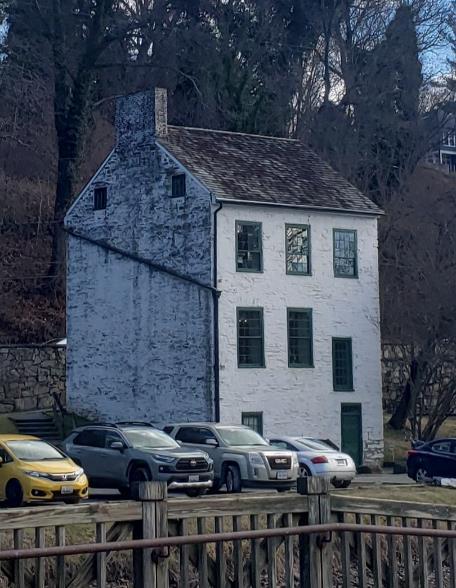
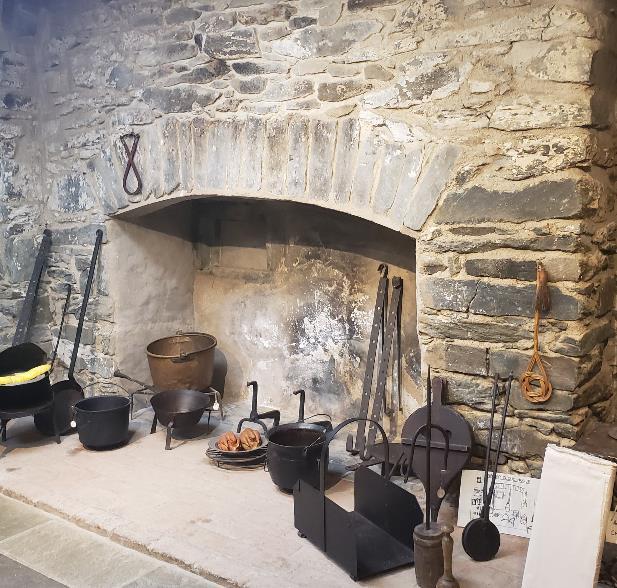

Several Board members and volunteers had a very informative visit to the Clara Barton National Historic Site in Glen Echo, MD on January 24, 2024. The imposing 1891 structure is currently empty in preparation for renovation in the near future. Nonetheless, we were able to gain a good understanding of how the house was set up and functioned. In 1974, the house was designated a National Park Service (NPS) site, the first in honor of a woman.
The house was initially built for the storage of relief supplies and modelled on shelters created following the 1889 flood in Johnstown, PA. As such, it has a unique architecture that includes an almost “cavernous” wood paneled entrance and long hallway lined with storage cupboards. After some adaptations, the house became Barton’s residence in 1897. A particularly fascinating feature –still visible – is the ceiling made of muslin bandage material, which was cheaper than plaster. Barton lived, housed staff and others, and ran the Red Cross from there until 1912.

After the NPS ranger’s detailed description of Clara Barton’s life, charitable and innovative work, the history of the site and Glen Echo, we went to Friends member Kay Oman’s home for a delicious luncheon. We appreciated her generosity, elegant presentation, and delicious food. (Ask her for her flourless chocolate cake recipe!)
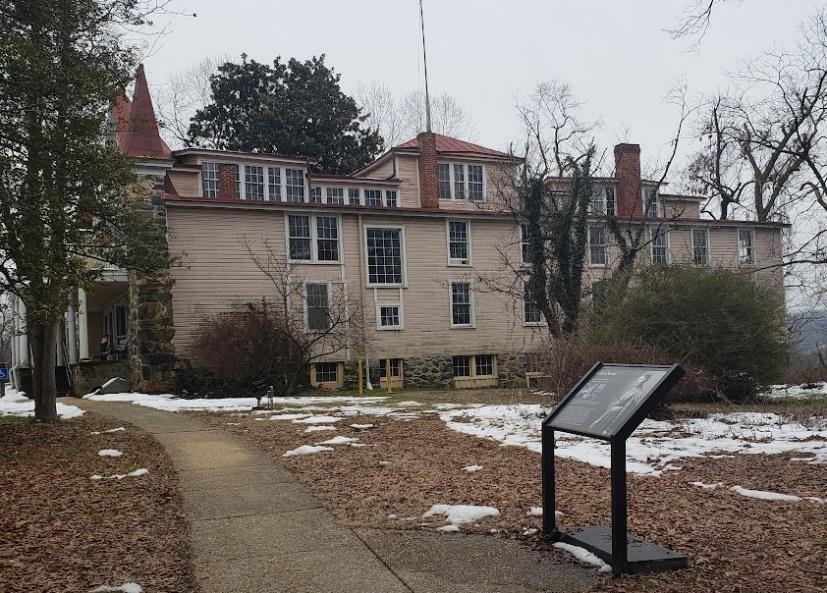

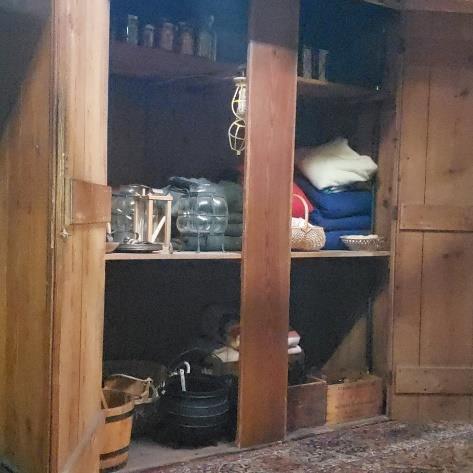
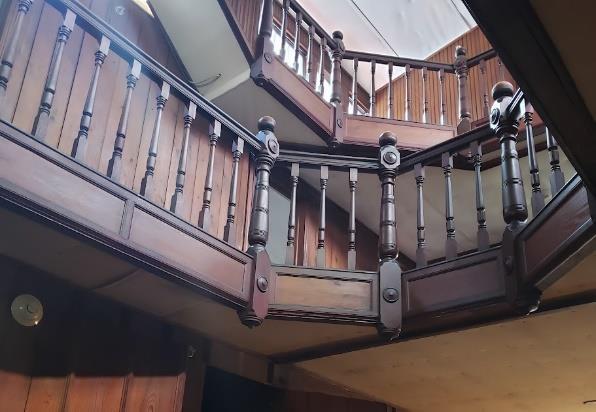
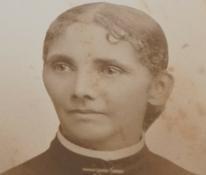
New Tudor Place Exhibition
Through October 13, Tudor Place will offer, “Ancestral Spaces: People of African Descent at Tudor Place.”
Curated in collaboration with descendants, this special installation and guided tour presents the multifaceted individuals and families of African descent who lived and worked at Tudor Place. Explore the historic house through their lives, learn how they impacted the world around them, and discover their enduring legacy.
Tudor Place is located at 1644 31st St., NW, in Washington, DC. It offers in-person and virtual tours. For more information, go to Tudorplace.org.

Cherry Hill Farmhouse Opens for 2024
April 6 marked the first day of our 2024 public Saturday morning tours season. Although the day was a bit chilly, the Friends were able to assist coordinator Holly Irwin in starting off the season with an ice cream social on the back patio.
The simple recipe of cream, sugar, and vanilla created delicious ice cream, thanks to the efforts of volunteers and children willing to churn the mixture. During the churning, a canister of ingredients was placed in a tub of salted ice to cool and harden. The activity had to be repeated numerous times to keep up with demand!

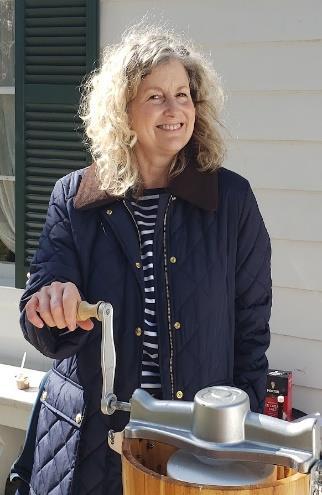
Surratt House Museum
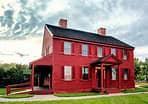
Surratt House Museum is a historic property of The Maryland - National Capital Park and Planning Commission and its Dept. of Parks and Recreation for Prince George’s County. It opened to the public in 1976. The house was built in 1852 as a middle-class farmhouse for the family of John and Mary Surratt. It also served as a tavern, public dining room, and hotel for traveling gentlemen. With the advent of the Civil War, the tavern became a clandestine Confederate safe house.
In the fall of 1864, faced with financial difficulties, the widowed Mary Surratt rented her country home and moved to 541 H Street in Washington, where she opened a boarding house. It was at the boarding house on H Street where the Surratt family became entangled in the plot by John Wilkes Booth to kidnap President Abraham Lincoln.
Booth’s kidnapping plan culminated in Lincoln’s assassination on April 14, 1865. During Booth’s flight out of Washington, the assassin stopped at the Surratt tavern to retrieve weapons and supplies which had been hidden there. As a result of her involvement, Mary Surratt was tried and convicted of conspiracy to assassinate the President. On July 7, 1865, she became the first woman to be executed by the U.S. government. (Article abstracted from SurrattMuseum.org.)
Martha Washington Pound Cake
INGREDIENTS
• 2 cups unsalted butter (4 sticks)
• 2 cups sugar
• 6 large eggs
• 3½ cups all-purpose flour sifted
INSTRUCTIONS
• 1½ tsp ground nutmeg
• 1 tsp lemon zest, freshly grated
• ¼ cup brandy

1) Preheat the oven to 350°F. Grease a 10-inch Bundt pan with vegetable shortening. (I used cooking spray )
2) In the bowl of an electric mixer (or beat by hand in a large bowl), cream the butter until light and add the sugar gradually while continuing to beat
3) Add the eggs, one at a time, beating in each one thoroughly before adding the next.
4) Sift the flour with the nutmeg, and gradually add to the butter and sugar, mixing in each addition thoroughly before adding more.
5) Add the lemon zest and brandy, mixing until well-combined.
6) Pour the batter into the prepared pan. Bake for 45-50+ minutes, or until a wooden skewer inserted in the center comes out clean. Provided by Kay Titus of the Colonial Dames Chapter III
President Lincoln’s Cottage
(National Monument and National Historic Landmark)
The restored President Lincoln’s Cottage in northwest Washington, DC is a 34-room, 1842 Gothic Revival-style building. It was originally built for disabled soldiers. It provided a peaceful and cool retreat for the President and his family from May to November in 1862, 1863, and 1864. It was also an escape from the memories of the death of their 11-year-old son Willie in 1862, which haunted them in the White House. It also “served as an important entertaining venue during the Civil War.”
Lincoln met with wounded soldiers and self-emancipated men, women, and children at the site and also during his travels to and from the White House. These encounters and conversations likely influenced his thinking about the war and slavery. Currently, the rooms of the cottage have few furnishings but a guide provides a thoughtful approach to the history of the place by setting the scene and providing audios of revealing historic correspondence. The first floor has interesting “jib” windows that have sills at floor level and can be used as doors. Lincoln’s large bedroom contains the desk upon which he wrote the Emancipation Proclamation, using bits and pieces he had composed over time and stored in his hat.
The visitors’ center has a dramatic exhibit called “Reflections on Grief and Child Loss.” It is composed of large vellum willow-like leaves containing messages of parents to their deceased children. (Visitors L-R: Holly Irwin, Jennifer de Vignier, Rosemary Ziskind, Carol Ann Siciliano, Maureen Budetti, and Katharine Stewart are shown below.)
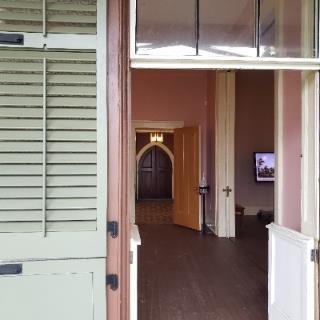

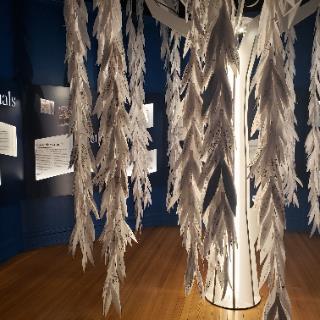
“Reflections on Grief & Child Loss” Exhibit
Origin of the Term: “Underground Railroad”
Scott Shane, author of “Flee North: A Forgotten Hero and the Fight for Freedom in Slavery’s Borderland,” attributes the first written use of the term to Thomas Smallwood, who was born enslaved outside Washington, DC, in 1801. Smallwood, largely self-educated, bought his freedom in 1831, ran a shoemaking business in DC, and wrote periodically for the abolitionist newspaper Tocsin of Liberty in Albany, NY, where he eventually moved. (A tocsin is an alarm bell.)

Based on research including the review of a massive collection of digitized American newspapers, Shane explains that Smallwood first used the term “Underground Railroad” in 1842, mockingly repeating the words of a harsh Baltimore police constable who collected rewards for returning enslaved people who sought their freedom. (The frustrated constable had also described their disappearances as being by “steam balloon.”) Smallwood continued referencing the term “underground railway” in subsequent writings, even suggesting that bewildered landowners, whose enslaved workers had vanished, could check with the office of the underground railroad in Washington, DC, where he was the “general agent,” to facilitate recovery of their “property.”
Charles Torrey, a younger white gentleman, who became the editor of the Tocsin continued the “joke” in his writings and eventually the term was picked up by other writers and used as an accepted term for escape from slavery. (For more information go to “The Man Who Named the Underground Railroad,” The New York Times, September 17, 2023.)
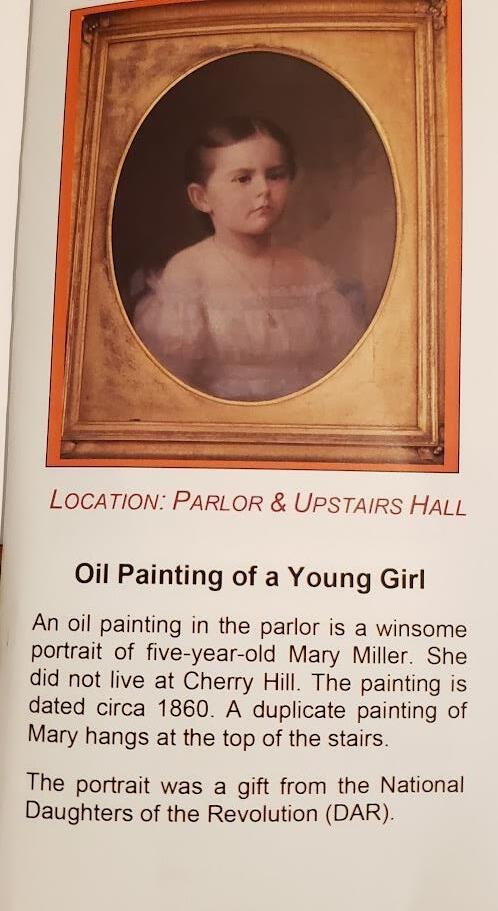

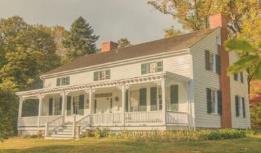
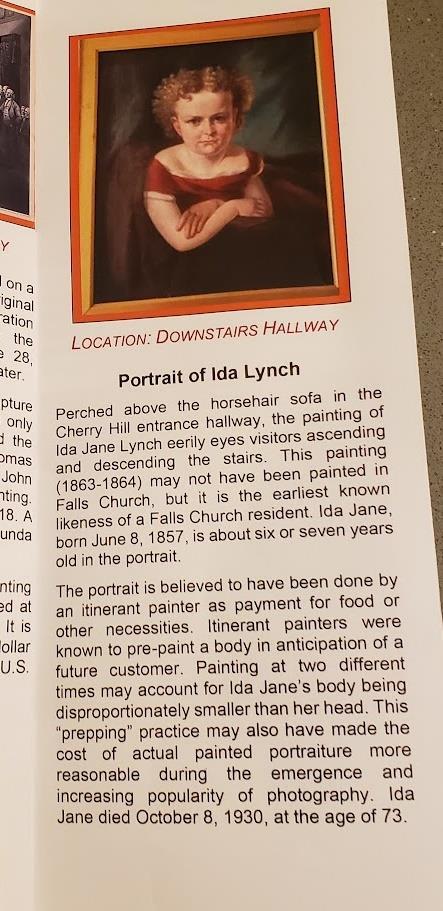
Our new brochure highlights specific artwork in the Farmhouse and provides details about the item itself, the genre and the origin of each piece.
Brentsville Courthouse Historic Centre
The history of the rural town of Brentsville, VA, offers insight into various aspects of life there during the 19th century. The 28-acre complex includes a restored courthouse, a jail, a farmhouse, a church (circa 1873) and a later period school room (1929-1944). It also contains a nature trail.
Prince William County used the Courthouse from 1822 to 1893. It provided a location for voting, mustering for the Army, legal property disputes, and capital criminal cases. The jail, which has been renovated, was built at the same time. It has six cells (very small), the jailer’s office, and a living space. An interesting aspect of the cells was that the windows were open to the outdoors even in winter.
The rustic Haislip-Hall Farm House was built around 1850, about the same time Cherry Hill was built. It was moved to its present site in 2005. (Upper photo: Courthouse) (Photos below L-R: Farmhouse, main room of farmhouse, courthouse interior)
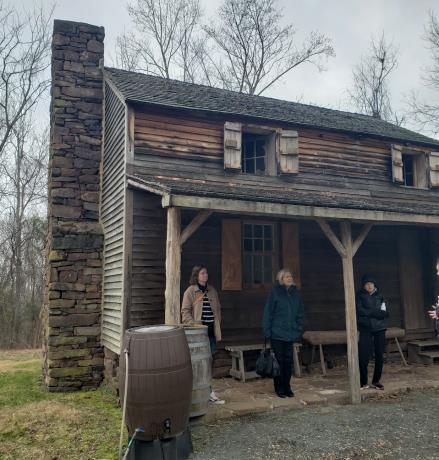
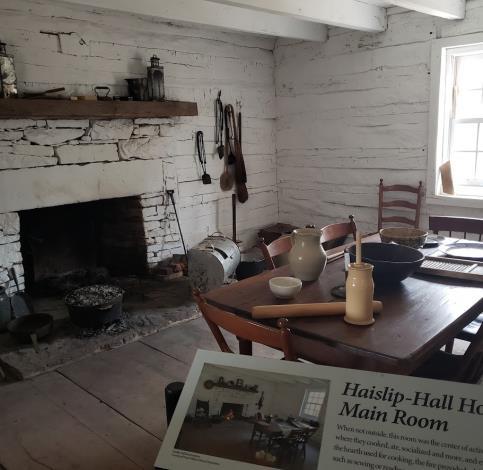
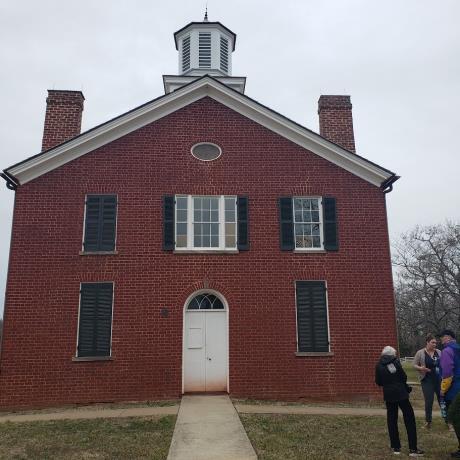
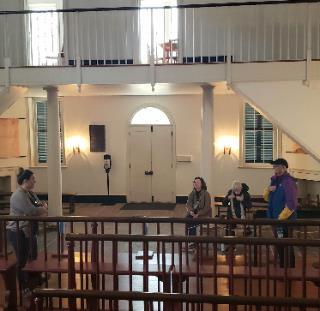
Become A FoCH Member!
Joining is easy! Just fill out this membership form, enclose the appropriate payment amount and return to:
Friends of Cherry Hill
312 Park Avenue Falls Church, VA 22046

Name:
Address:
Phone: _______________________
Check one:
Email: __
_____ New Membership (1 year: $20 January 2024 – January 2025)
_____ Renewed Membership (1 year: $20 January 2024 – January 2025)
_____ Donation
_____ Life Membership ($250, one-time payment)
_____ I would like information about becoming a Cherry Hill Farm volunteer. Make checks payable to: Friends of Cherry Hill
Save a stamp! You can read each issue of the Cherry Hill newsletter online at www.cherryhillfallschurch.org. If you prefer that format to receiving a paper copy, please check this box.
Content provided by Maureen Budetti, Joanne Caramanica, Holly Fenelon, Holly Irwin & Diane

Friends of Cherry Hill
312 Park Avenue Falls Church, VA 22046
